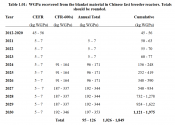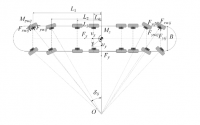The report is about the proliferation risks of India's supposed fast breeder program. It doesn't compare the economics of producing WgPu from different reactors, it just discusses the feasibility of producing Pu from fast breeders as a proliferation risk. Yes, it's technically feasible but that's not the point - the point is it's much easier and cheaper to produce WgPu from dedicated production reactors.Actually no, at least not the same interpretation from this report.
Historically, WgPu production has been dominated by two reactor types: graphite moderated (water or gas cooled) and heavy water moderated and cooled. Of the two, graphite is far more common (Hanford in the US and all production reactors in the USSR). The reason is the sheer simplicity of the design, it's a block of graphite with holes drilled in it in which you place natural uranium rods. It's so simple that the very first experimental reactors were graphite moderated. Cooling the reactor is the most complicated part of it.
I haven't looked at the economics in detail, but I wouldn't be surprised if you can build several graphite moderated reactors for the cost of one breeder, and what matters in production is cost per kilogram of plutonium produced.
The problem with these reports in general is that they discuss surreptitious means by which states could manufacture fissile material. They don't discuss or even consider the scenario where a state with a mature weapons program openly decides to expand that program, which is what's germane to China's case.
I think this is by far the likeliest scenario. Do you have a link to this NATO report?If the report from NATO is right about new reactor in 404, there is certainly an option to produce WgPu in old school method meanwhile FBR could play a role as backup.



